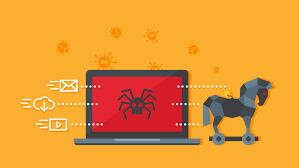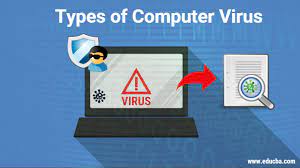What is virus?Its types and how does it damage your computer.
 Musab Amer
Musab Amer
Virus:
A computer virus is a type of malicious software, or malware, that spreads between computers and causes damage to data and software.Computer viruses aim to disrupt systems, cause major operational issues, and result in data loss and leakage.
#Types of Virus: Some famous types of viruses are as follows:
1:Boot Sector Virus
A boot sector virus is a type of virus that infects the boot sector of floppy disks or the Master Boot Record (MBR) of hard disks (some infect the boot sector of the hard disk instead of the MBR). The only absolute criteria for a boot sector is that it must contain 0x55 and 0xAA as its last two bytes. If this signature is not present or is corrupted, the computer may display an error message and refuse to boot. Problems with the sector may be due to physical drive corruption or the presence of a boot sector virus.
How Boot Sector Viruses are Spread?
Boot sector computer viruses are most commonly spread using physical media. An infected floppy disk or USB drive connected to a computer will transfer when the drive's VBR is read, then modify or replace the existing boot code. The next time a user tries to boot their desktop, the virus will be loaded and run immediately as part of the master boot record.
How to Get Rid of Them?
Removing a boot sector virus can be difficult because it may encrypt the boot sector. In many cases, users may not even be aware they have been infected with a virus until they run an antivirus protection program or malware scan.
2:Logic Bomb Virus
A logic bomb is a malicious program that is triggered when a logical condition is met, such as after a number of transactions have been processed, or on a specific date (also called a time bomb). Malware such as worms often contain logic bombs, behaving in one manner, then changing tactics on a specific date and time.
How Logic Bomb Viruses are Spread?
A logic bomb virus would then be a virus that has a logic bomb in its code. Unlike viruses and worms, which can infect a system on their own, a logic bomb is often inserted by someone with inside knowledge of the system — such as when a disgruntled employee embeds a logic bomb in their company's network.
How to Get Rid of Them?
Organizations can prevent logic bombs by following some cybersecurity best practices: Use antivirus software, and update it regularly. Periodically scan all files, including compressed files and subdirectories.
3:Trojan Horse Virus
A Trojan Horse (Trojan) is a type of malware that disguises itself as legitimate code or software. Once inside the network, attackers are able to carry out any action that a legitimate user could perform, such as exporting files, modifying data, deleting files or otherwise altering the contents of the device.
How Trojan horse Viruses are Spread?
However, the most popular tactic for spreading Trojan horses is through seemingly unthreatening emails and email attachments. Trojan horse developers frequently use spamming techniques to send their emails to hundreds or thousands of people.
How to Get Rid of Them?
Trojan viruses can be removed in various ways. If you know which software contains the malware, you can simply uninstall it. However, the most effective way to remove all traces of a Trojan virus is to install antivirus software capable of detecting and removing Trojans.

4:Redlof Virus
Redlof is written in Visual Basic Script (VBS) and encrypted as VBE (Visual Basic encoded script). On first being run, it creates a file with its executable code in the Windows system directory under the name Kernel. dll. The virus also creates files under the name kjwall. gif in the System32 and Web directories.
How Redlof Viruses are Spread?
Redlof (also detected as VBS/Redlof.A@m) is a polymorphic virus that embeds itself without any attachment to every email sent from the infected system. It executes when an infected email message is viewed.
How to Get Rid of Them?
Some antivirus software warns users of the presence of VBS_REDLOF.A-2 browser hijackers, but some new hijackers may not be detected or the security software may not be able to eliminate the intruder. In these cases, users will need to reinstall their browser to regain control of the user interface.
In extreme cases, the hijacker reinstalls himself in the browser, and users may need to delete the content of their computer, install a new operating system and the latest version of the browser, and restore their personal files from a backup.
5:Chernobyl virus
The Chernobyl virus is a malicious computer program that was designed to infect Windows®-based operating systems. It was originally referred to as the CIH virus and the Spacefiller. The name "Chernobyl virus" was coined because its first payload activation occurred on 16 April 1999, the 13th anniversary of the Chernobyl disaster.
How Chernobyl Viruses are Spread?
The Chernobyl parent virus, CIH, was spread via a portable .exe file format. It infected the host system by splitting its code up and inserting it into inter-section gaps within the infected files. From there, it reassembled and routed its code segments in unused space within the P.E. header.

Subscribe to my newsletter
Read articles from Musab Amer directly inside your inbox. Subscribe to the newsletter, and don't miss out.
Written by




